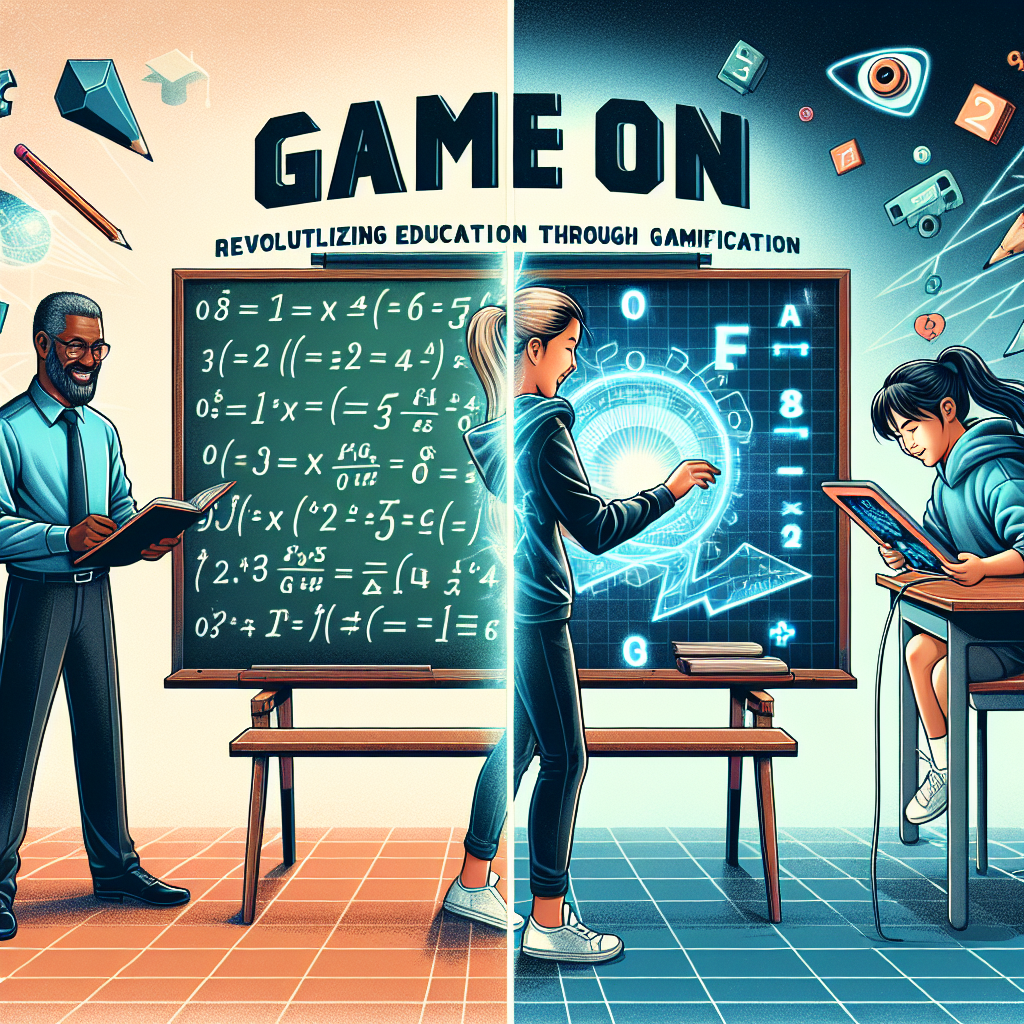Introduction
In a world where attention spans are dwindling and the digital landscape is continually evolving, traditional education methods often fall short. Enter Game On: Revolutionizing Education Through Gamification, a transformative approach that merges the elements of game design into learning experiences. This method not only captivates students but also enhances their motivation and engagement, offering a progressive pathway for educational advancement. With the rise of technology and interactivity, gamification has become essential in transforming educational outcomes, creating immersive learning environments that cater to today’s learners.
The Power of Gamification in Education
Understanding Gamification
Before diving into its implications and applications, let’s define gamification. Gamification refers to the integration of game-like elements such as points, badges, leaderboards, and challenges into non-game contexts, including education. The purpose? To make learning both enjoyable and effective, fostering a sense of achievement and competition.
Why Gamify Education?
-
Increased Engagement: Gamified elements can transform mundane tasks into exciting challenges. A study published in the Journal of Educational Psychology found that students engaged in gamified learning showed a 60% increase in motivation.
-
Enhanced Retention: Incorporating rewards and challenges enhances memory retention by triggering emotional responses. According to a report by the New Media Consortium, gamified learning experiences lead to double the retention rate compared to traditional methods.
- Fostering Collaboration: Many gamified educational platforms encourage teamwork. This not only helps students learn from each other but also builds essential social skills.
Case Study 1: Duolingo
Duolingo, a language learning application, exemplifies effective gamification. Users progress through levels, earning points and badges for completing lessons. The competitive element of leaderboards encourages consistent practice and engagement. Analysis of Duolingo’s user data reveals that learners spend an average of 34 hours on the app annually, significantly higher than conventional learning platforms.
Key Gamification Elements in Education
- Points: Rewarding students for completing tasks encourages participation and goal-setting.
- Badges: Visual recognition of achievement can motivate students to unlock new skills.
- Leaderboards: Fostering competition can encourage learners to push their boundaries.
- Challenges and Quests: Introducing narrative elements can make learning feel more like an adventure.
Benefits of Gamification in the Classroom
-
Real-Time Feedback: Gamification allows for immediate performance tracking, enabling students to understand their strengths and weaknesses, and adjust their learning strategies accordingly.
-
Increased Motivation: When education becomes a ‘game,’ students often approach it with a more positive mindset.
-
Customizable Learning Experiences: Gamification can be tailored to fit various learning styles, accommodating diverse student needs and preferences.
- Inclusion and Accessibility: Technologies used in gamified learning can accommodate learners with different abilities, ensuring everyone has a chance to excel.
Case Study 2: ClassCraft
ClassCraft is a gamified learning platform where students create characters and embark on quests related to their curriculum. Teachers can customize missions aligned with their lessons, fostering engagement and collaboration. The platform has demonstrated significant improvements in classroom behavior and academic performance. A survey indicated that a staggering 88% of teachers using ClassCraft reported improved student engagement.
Challenges of Implementing Gamification
While gamification offers substantial benefits, it’s not without challenges:
- Overemphasis on Competition: An excessive focus on competition may discourage some students.
- Resource Intensive: Developing gamified content may require significant time and financial investment.
- Quality Over Quantity: Gamification should enhance learning, not distract from it.
Table 1: Challenges vs. Solutions in Gamification
| Challenge | Solution |
|---|---|
| Overemphasis on Competition | Balance competitive and cooperative elements, fostering community. |
| Resource Intensive | Start small and scale gradually, utilizing existing resources. |
| Quality Over Quantity | Regularly assess the effectiveness and relevance of gamified content. |
Implementing Gamification Strategies: Step by Step
Step 1: Define Learning Objectives
Begin with clear, measurable educational goals. What do you want your students to achieve through gamification? This foundational step aligns gamified elements with curriculum outcomes.
Step 2: Choose the Right Tools
Select platforms and tools that best fit your students’ needs. Options like Kahoot, Quizizz, or Edpuzzle offer easy-to-integrate gamified experiences.
Step 3: Design Engaging Content
Create narratives and quests that are not only fun but also relevant to the subjects being taught. Incorporate multimedia elements to enrich the learning experience.
Step 4: Monitor and Evaluate
Regularly assess student engagement and learning outcomes, making necessary adjustments to your gamified approach.
Conclusion
Game On: Revolutionizing Education Through Gamification is not merely a trend; it’s a paradigm shift in how we perceive learning. By integrating game mechanics into educational frameworks, we can create a dynamic and inclusive learning environment that encourages all students to thrive. Educators are urged to embrace this innovative approach and transform their classrooms into spaces of collaboration, excitement, and continuous growth.
As we move forward, adopting these techniques will not only foster engagement but will also prepare learners for a future where adaptability and creativity are paramount. It’s time to unleash the potential of gamification—let the games begin!
FAQs
1. What is gamification in education?
Gamification in education is the use of game-like elements, such as points and rewards, to enhance learning experiences and increase student engagement.
2. How does gamification improve student motivation?
By incorporating competitive and rewarding elements, gamification transforms traditional education into exciting challenges, making learning more appealing.
3. Can gamification cater to diverse learning styles?
Yes, gamification can be designed to accommodate various learning preferences, fostering an inclusive educational environment.
4. What are some popular tools for gamifying lessons?
Popular tools include Kahoot, Quizizz, Edpuzzle, and ClassCraft, each offering unique features for creating interactive educational experiences.
5. Are there any drawbacks to gamifying education?
Some challenges include overemphasis on competition, resource intensiveness, and the risk of distraction from actual learning. Proper planning and balance can mitigate these concerns.
In this in-depth article, we’ve explored the transformative landscape of gamification in education, highlighting its essential role in modern learning environments while providing actionable insights for educators ready to embark on this exciting journey.

